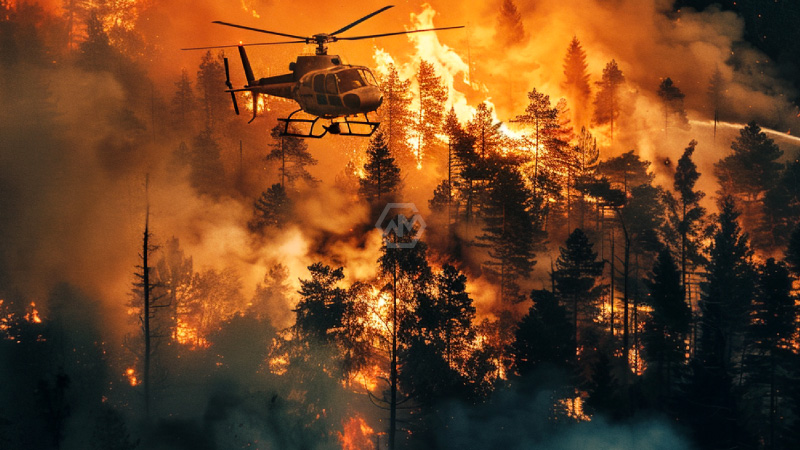- Park Fire rapidly expands in California, threatening thousands of homes.
- Over 110 active fires burn across the U.S. amid record heat and dry conditions.
- Oregon’s Durkee Fire remains largely uncontained, covering nearly 630 square miles.
The western United States is experiencing a severe wildfire season, with California’s Park Fire growing at an alarming rate and endangering thousands of homes. The fire’s intensity has drawn comparisons to the catastrophic Camp Fire of 2018, which resulted in significant loss of life and property.
Firefighters are working tirelessly to contain the blaze, but the dry conditions and abundant fuel make it a challenging battle.
Unprecedented Wildfire Season Ravages Western States
Oregon is also grappling with a major wildfire, the Durkee Fire, which has merged with the Cow Fire to cover nearly 630 square miles. This fire remains highly unpredictable and is only 20% contained.
The region’s record heat and bone-dry conditions, exacerbated by climate change, are contributing to the severity and frequency of these wildfires. More than 110 active fires are burning across the U.S., emphasizing the urgent need for effective wildfire management strategies.
This year, the National Interagency Fire Centre reports that more than 27,000 fires have burned over 5,800 square miles across the United States. The impact of these fires is profound, with both immediate dangers to life and property and long-term environmental consequences. In Canada, the situation is similarly dire, with more than 3,700 fires burning over 8,000 square miles so far this year.
The human toll of these fires is significant, as demonstrated by the tragic death of a pilot in eastern Oregon. The pilot was flying a small air tanker that crashed while fighting one of the numerous wildfires in the region. Such incidents highlight the perilous conditions faced by those on the front lines of wildfire suppression efforts.
The ongoing wildfire season in the western United States is a stark reminder of the increasing challenges posed by climate change. As fires continue to rage and expand, the need for effective management strategies and climate action becomes ever more critical.
“There’s a tremendous amount of fuel out there and it’s going to continue with this rapid pace,” Cal Fire incident commander Billy See said.



